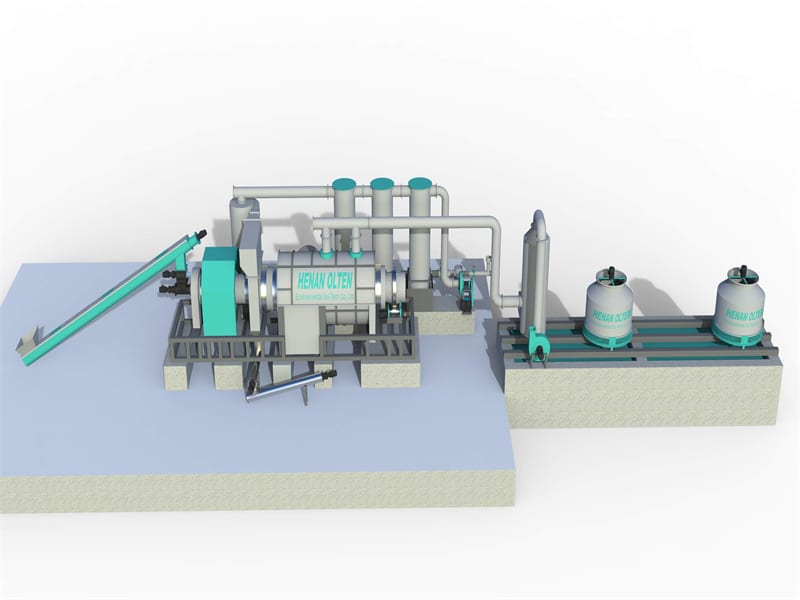Raw materials
Most of the raw materials with biomass energy are suitable for the production of biochar. At present, the commonly used raw materials for the production of biochar are divided into plant straw residues, animal manure and sludge. The application of biomass energy resources of these wastes has great prospects.
Plant straw residues
Plant straw is the most common raw material for biochar production, and the biochar prepared from plant straw has a high carbon content. Plant straw is rich in lignin, cellulose and hemicellulose, and the content of lignin and hemicellulose determines the carbon content of the prepared biochar, and the pyrolysis of lignin mainly produces coke. The composition of plant straw determines its yield, and the use of plant straw to prepare biochar has a higher yield.
Animal manure
It is feasible to prepare biochar from animal manure, but the carbon content of biochar prepared from animal manure is lower than that of plant straw biochar.
Sludge
With the development of cities, the amount of sludge treated by urban sewage plants has increased year by year, and the preparation of sludge into biochar has become a new way for its resource utilization. The high content of heavy metals, volatile matter and moisture in the sludge, and the low content of organic matter, lead to a low yield of solid products when it is pyrolyzed alone.

Preparation method
At present, the continuous carbonization machine produced by our company adopts anoxic slow thermal cracking method. The organic matter is heated at high temperature (500℃-1000℃) under anaerobic or anoxic conditions to decompose it into three types of products: gas, liquid and solid. Compared with the traditional incineration method, the thermal cracking method is a more promising treatment method.

Research on the characteristics of biochar
Large specific surface area
Due to the porous structure and large specific surface area of biochar, it has good adsorption capacity.
Rich in functional groups
Biochar contains abundant functional groups, such as hydroxyl, carboxyl, amino, carbonyl, etc. The structure of these functional groups is an important factor determining the adsorption capacity of biochar.
Resource utilization of biochar
Pollution remediation agent
Adsorption of nitrogen and phosphorus in wastewater
Due to the special porous structure and rich functional group structure of biochar, it has good adsorption capacity and can be used to treat nitrogen, phosphorus and other pollutants in sewage.
Adsorption of heavy metals
The adsorption capacity of biochar to heavy metals is also very outstanding.
Adsorption of organic pollutants
Biochar can be used to adsorb antibiotic pollutants. The mechanism of action is that the functional groups on the surface of biochar can combine with organic matter to play an adsorption role.
Soil conditioner
Biochar can increase the pH of crop soil, increase soil organic carbon content, and improve crop yield.
New Fertilizers
In agricultural production, the direct application of biochar cannot provide enough nutrients such as nitrogen, phosphorus, and potassium for crops, and carbon-based fertilizers reasonably solve the problems faced by the current direct application of biochar. Charcoal-based fertilizer is a new type of fertilizer made by mixing biochar and chemical fertilizer according to a certain ratio, which can control the application amount of chemical fertilizer, improve the utilization rate of chemical fertilizer, and reduce the damage of fertilizer to the soil environment.






